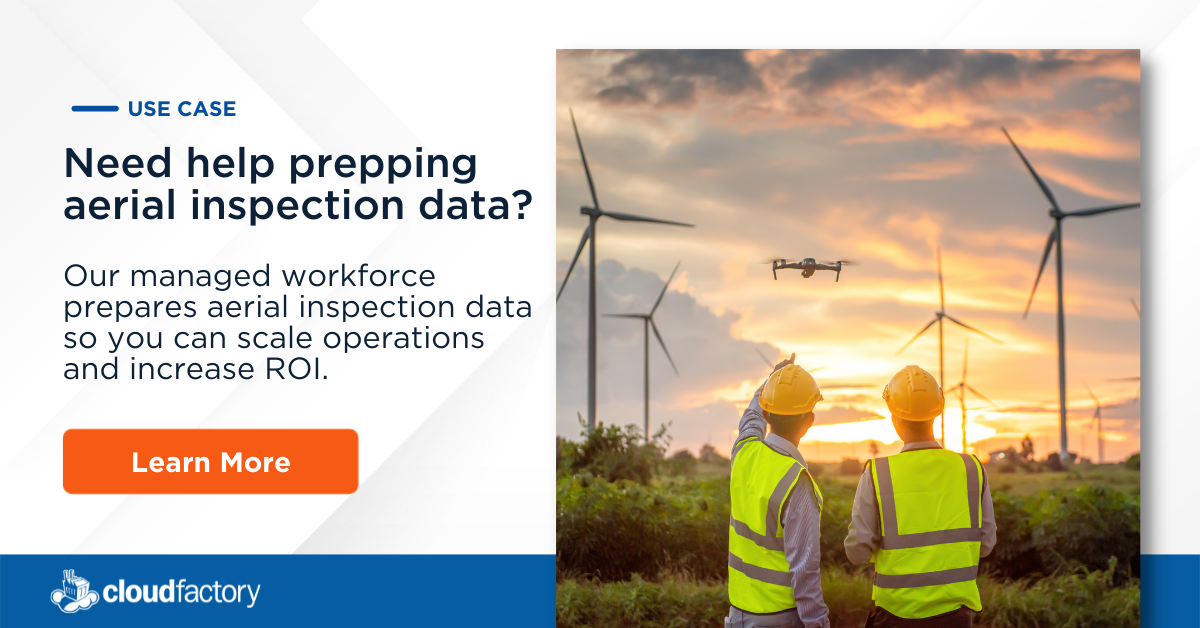Have you ever thought of high-power electric utility lines as being electron highways?
That analogy comes from Hudson Gilmer, CEO of LineVision, a rapidly growing technology company that helps utility partners lead the energy transition through digital industrial asset management. Neheet Trivedi, CloudFactory’s geospatial and aerial enterprise account executive, met Hudson in 2021 at Greentown Labs, a clean energy incubator based in Somerville, Massachusetts. Soon after, LineVision became a CloudFactory client.
In the following CUAV News interview with editorial analyst Scott Howe, Neheet shared insights into how LineVision harnesses high-quality drone data to create the powerful digital twins its AI platform uses to optimize underutilized electron highways. The result? Increased power transmission efficiency and lower costs for utilities and consumers alike.
Watch the interview, or read on for a recap.
Interview recap: CUAV News asks CloudFactory about LineVision, industrial asset management, aerial inspection, and drone data processing
LineVision operates in the digital industrial asset management sector, which is taking off as energy shortages and economic downturns put the squeeze on the energy vital to us all.
The company is a pioneer in equipping utilities with real-time monitoring and analytics to improve electrical grid capacity, resilience, and safety. Their technology provides dynamic line ratings to help utilities optimize utilization, detect anomalies, and improve overall asset health.
How does it work? In his conversation with Scott, Neheet outlined the steps:
- During site set-up for each new client, LineVision captures 3-D LiDAR point cloud data of power lines and lattice towers.
- CloudFactory’s data analysts annotate the data so LiveVision can develop an accurate digital twin baseline model.
- Sensors on the lines can then compare data to the model and provide utility customers with real-time, dynamic line ratings.
- As the dataset grows, a true picture emerges of how conductors perform compared to expectations against digital twins, which enables utilities to safely add electron traffic to their power-line highways and increases the utilization of variable renewable energy sources, such as wind and solar.
As you’ll discover in the full LineVision client story, CloudFactory’s precision drone data annotation—precise up to one centimeter—helped LineVision achieve capacity-saving goals within weeks instead of months and cut data-processing time by two-thirds.
In the CUAV News interview, Neheet also shared how CloudFactory helps other aerial and geospatial industries apply this level of high-quality annotation to their work. From oil and gas to forestry and mining, and from heavy construction to power utilities, many companies are adopting advanced AI technology to reduce the operational costs of planning, inspections, and maintenance.
How can CloudFactory help you?
CloudFactory’s managed human-in-the-loop workforce has deep expertise in labeling 2-D and 3-D images and video, plus sensor, point cloud, orthomosaic, digital twin, and LiDAR data. Our expertise means your team can focus on more strategic priorities and gain valuable insights quickly while optimizing operational costs.
Learn more about how our managed workforce prepares aerial inspection data so you can scale operations and improve industrial asset management.



